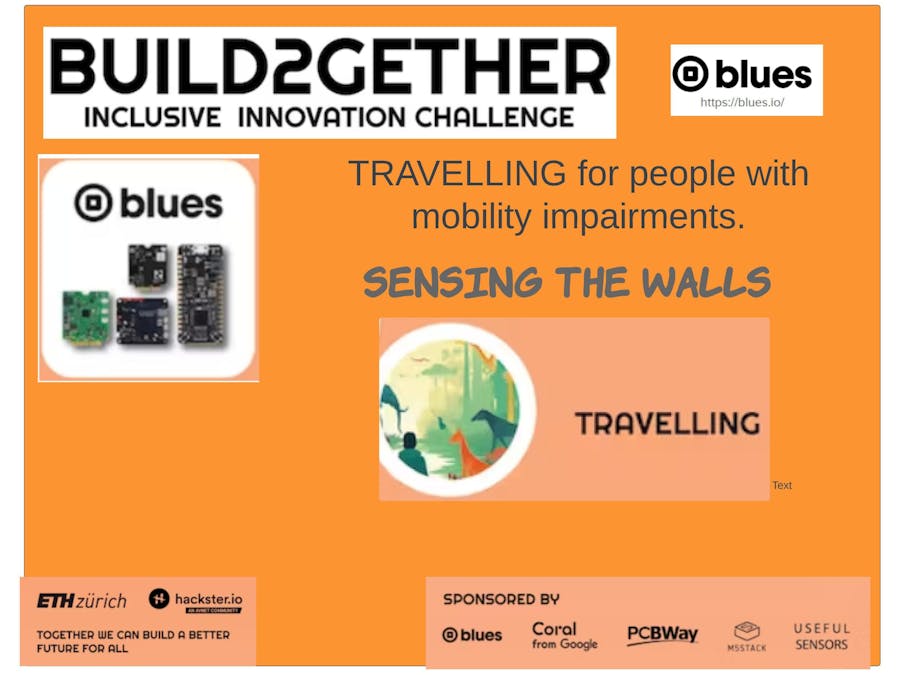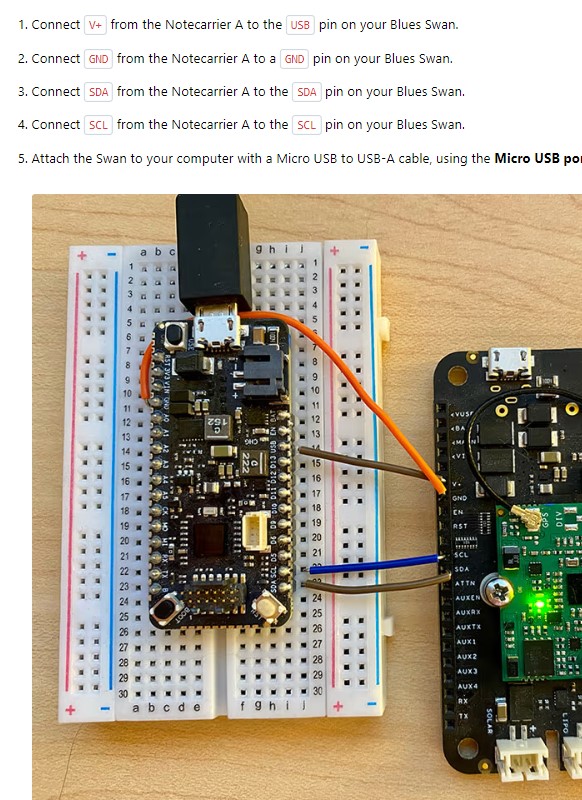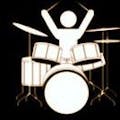This section will describe my project, Sensing the walls. It describes my Design and how I used the Blues Kit and a second design to aid travelers with mobility problems.
"Sensing the Walls" is an innovative project born out of a desire to aid both visually impaired lap swimmers and individuals with mobility issues. The primary focus is on preventing collisions with walls and obstacles in unfamiliar environments, whether in a swimming pool or during travel. This is my 2nd entry in the Build2Gether challenge submitted for the Traveling theme. My 1st entry, Making Waves with Water IoT has been submitted for the Swimming theme. This project will provide an in-depth exploration of the project, from its initial conception to the current stage of development.
The IdeaI came up with a solution to allow lap swimmers with impaired vision to swim laps in a pool. But I realized I could also use my design for travelers with mobility impairments
The initial spark for this project came while working on my Project for visually impaired lap swimmers navigating pools. Realizing the potential crossover, this project was created to address the challenges faced by travelers with mobility impairments. The core idea involves using an enclosure to house electronic components, designed to detect and warn of approaching walls and obstacles. I realized that a person with mobility issues face an even greater chance of hitting objects and walls while traveling, so I adapted the design to submit to the travel challenge.
Functional Spec
The goal is to create a device equipped with sensors to detect the walls of an unfamiliar environment. The device operates in two modes: Learn Mode and Run Mode.
- Learn Mode: In this mode, the device conducts a dry run using machine learning to learn the layout of the environment. For example, in a hotel room, the device learns the location of walls and the correct path between them.
- Run Mode: Once the environment is learned, the device enters Run Mode. It tracks the GPS coordinates of a wheelchair's movement and, based on the learned model, emits a warning beep when approaching a wall or obstacle..
For the swim project, a flotation device is required, but for this project a flotation device is not needed. It utilizes the same hardware components enclosed in a waterproof enclosure used in my Swimming project. . This build involves assembling the enclosure, incorporating the power source and hardware components, creating a functional prototype ready to be attached to a wheelchair frame.
An Enclosure (It does not need to be waterproof)
The Power source
The Hardware components
The Power source + The Hardware components + waterproof enclosure
Assembled and ready to attach to the boogie board
Using the techniques that I learned from the tutorials 1 through 4, I was able to figure out how to use the Swan and the Notecard to implement my Idea. But first I needed to spec out the flow of the firmware. As I mentioned above, 2 modes, Learn Mode and Swim Mode are used to aid the swimmer using the system. I will describe the flow of each mode in the following sections.
Learn Mode
start to track sending acard.location.trackcommand to the notecard.take readings of each track and sent to Notehub.If a wall/object is hit... Beep a warning and send the track to Notehubmove forward in another directionIfthe system detects that you have reached the point where you started then the system will go into Run Mode.
Run Mode
start to move forwardIs the wall detected? if so BEEP (danger Wall) repeatelseRead the Notehub data .....Still on track? If not Beep (Off track)Repeat
To test the system, test the operation of the 2 modes by walking the kit around an area, to simulte moveing around the area in a wheelchair.
ImplementationTo implement this you can proceed to attach the enclosure to a wheelchair. And first train the model and then run the unit in the area to assist the people with mobility impairments.
ConclusionsI decided to use the design from my swimming project since they were so much related to the problems of traveling people with mobility problems. I wanted to take advantage of the multiple project entries. Since I spent half of the Swimming project on learning the Blues hardware there is no mention of the technical aspects of the Blues Hardware kit.
I am still in the process of coding the firmware and the deadline is fast approaching. I hope I will be judged for my research on the Blues hardware. and I will continue to work on my firmware.
I only scratched the surface of the possibilities here. I will continue to enhance the prototype to allow for better collision detection, tracking, wearability options, audio warnings and overall software improvements.
The Blues hardware is great, and I might enhance the prototype with other components that I have.
In summary, "Sensing the Walls" represents an initiative that not only addresses the challenges of visually impaired lap swimmers but extends its reach to enhance the mobility and safety of individuals facing travel obstacles. The commitment to continuous improvement and the potential integration of additional components showcase the project's dedication to creating a robust solution for those with mobility impairments.
Thank you for reading through my project. It was fun. Please comment on your thoughts.











Comments
Please log in or sign up to comment.